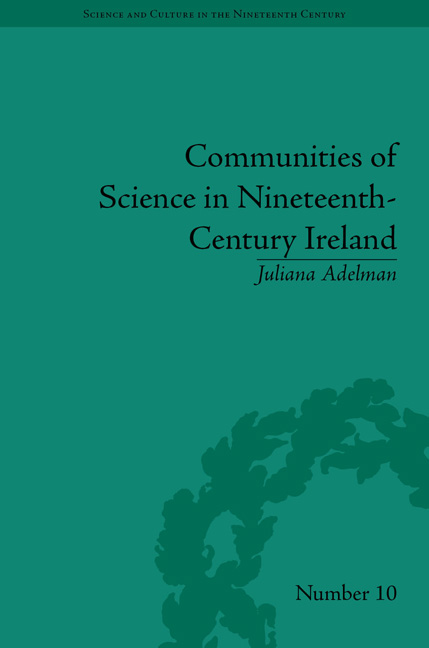4 - Museums and exhibitions
Summary
The popular exhibition, standing thus to the true educational museum nearly in the same relation as a popular lecture in science stands to sound systematic teaching
Robert KaneIn 1865, the Exhibition Palace and Winter Garden company was founded in Dublin with the aim of building a unique and permanent exhibition space. The first event to be hosted in the palace would be an industrial exhibition and the new company's shareholders hoped that the hall would aid in the cultivation of the natural and mechanical sciences through public lectures, further exhibitions and a library. Among the supporters of the exhibition was the author and satirist William Smyth who penned a celebratory drama with characters such as goddesses of industry and pleasure, ‘Erin’ and Erin's servant, a fairy queen. The fairy queen was tasked with the erection of the palace itself: ‘Here Erin finds a useless green, / And, with a happy, careful thought, / She tells me to transform the scene, / And all this waste expel.’ With a wave of the fairy's wand, she replaced waste land with a monument to industry and progress. The idea that industrialization would simply sweep aside an unproductive agricultural past and replace it with an orderly industrial future was prevalent in nineteenth-century Ireland. Rather than Erin and a fairy queen, science was often the key character in narratives of improvement and industrialization. Museums and exhibitions served as stages for acting out scientific and industrial prowess in visual form. Through the display of scientific and industrial objects, the curators of museums and exhibitions symbolically expelled wastes and replaced them with order, industry and scientific progress.
This chapter examines the museum and the exhibition as locations for science education and popularization in nineteenth-century Ireland. The chapter focuses on the natural history collections of the Queen's Colleges and on a series of privately funded industrial exhibitions in Dublin and Cork.
- Type
- Chapter
- Information
- Communities of Science in Nineteenth-Century Ireland , pp. 101 - 130Publisher: Pickering & ChattoFirst published in: 2014



